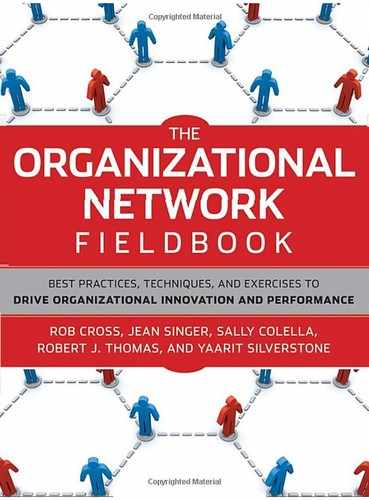Part III: DRIVING ORGANIZATIONAL CHANGE THROUGH NETWORKS
Top-down organizational change efforts that do not include explicit steps to work through informal networks are often doomed from the start. Interventions informed by ONA give executives a window into the organization, helping to reveal opinion leaders who can inspire others to support the change program and serve as communication channels during the process.
Two chapters in this section describe efforts to spread messages effectively throughout an organization. Steve Denning and Rob Cross explore the use of narrative, in combination with network analysis techniques, to facilitate culture change. Leaders can work through the organization's central connectors and brokers to spread a narrative that will engage the employees who must implement the change.
Terry Williams focuses on the need to make sure that critical messages are not just heard but also understood during times of upheaval. He describes in detail a "message monitoring" process at the Cleveland Clinic and Resurrection Health Care, in which both organizations identified highly connected and influential people and enlisted them in disseminating messages about the need for change and the requirements of the process.
Leaders attempting to implement a new strategy must ensure that the organization's informal networks are aligned with it. Sally Colella lays out the agenda for a workshop that a financial firm used to educate employees about a new strategy and to build the collaborative networks it required.
For a leader stepping into a new role, ONA tools can accelerate the transition, write Rob Cross, Robert Thomas, Ana Dutra, and Carrie Newberry. The leader they describe, who took over an underused unit in a consulting firm, used ONA to become familiar with collaboration patterns and then designed a suite of network-based interventions to improve connectivity, increase revenues, promote innovation, and improve talent management.
In the final chapter of this section, Rob Cross and Robert Thomas present the case of a pharmaceutical company whose decision-making processes had become highly inefficient as a result of its rapid growth. The solution was not to boost connectivity but to decrease it, which the company achieved by clarifying and codifying decision rights and responsibilities.
